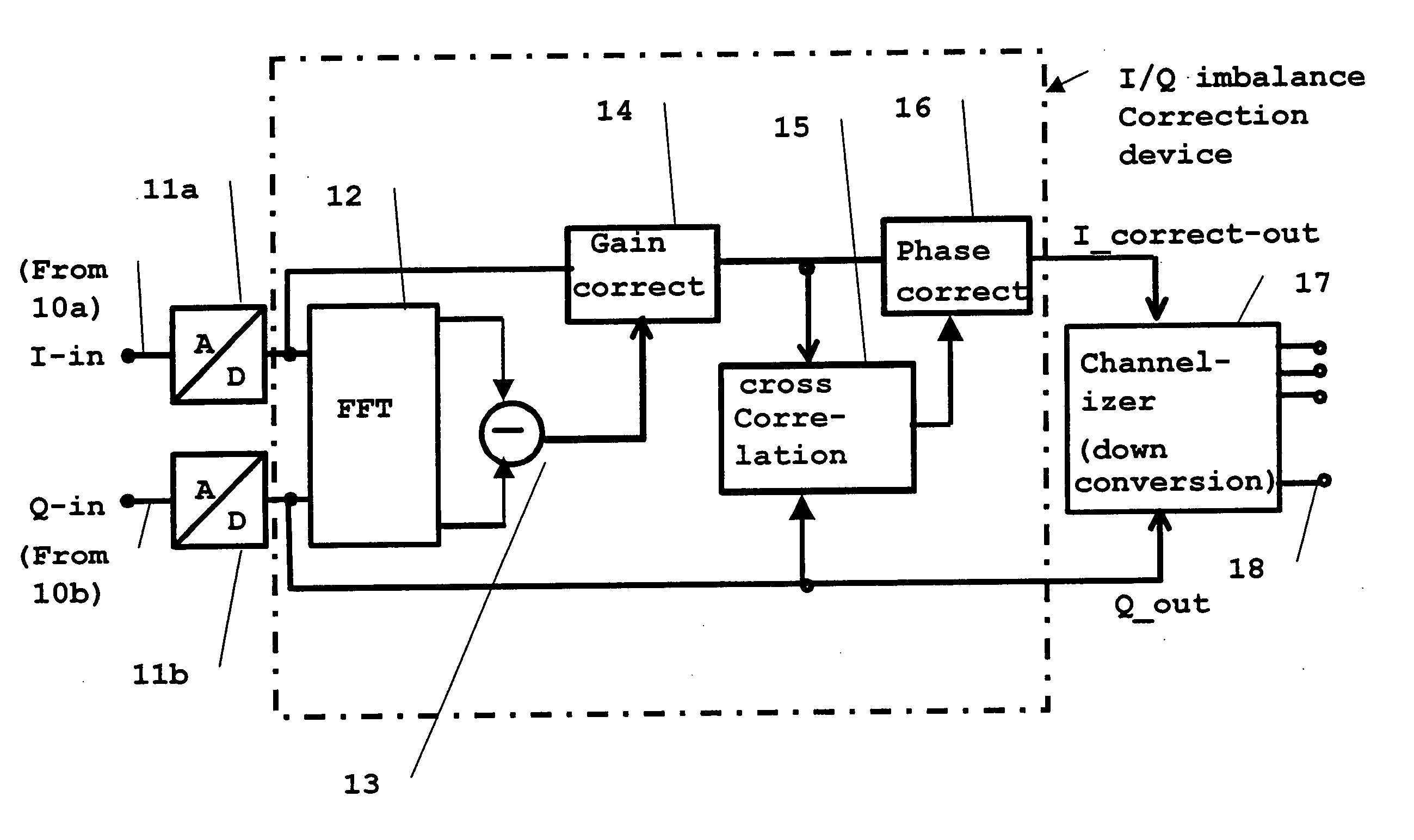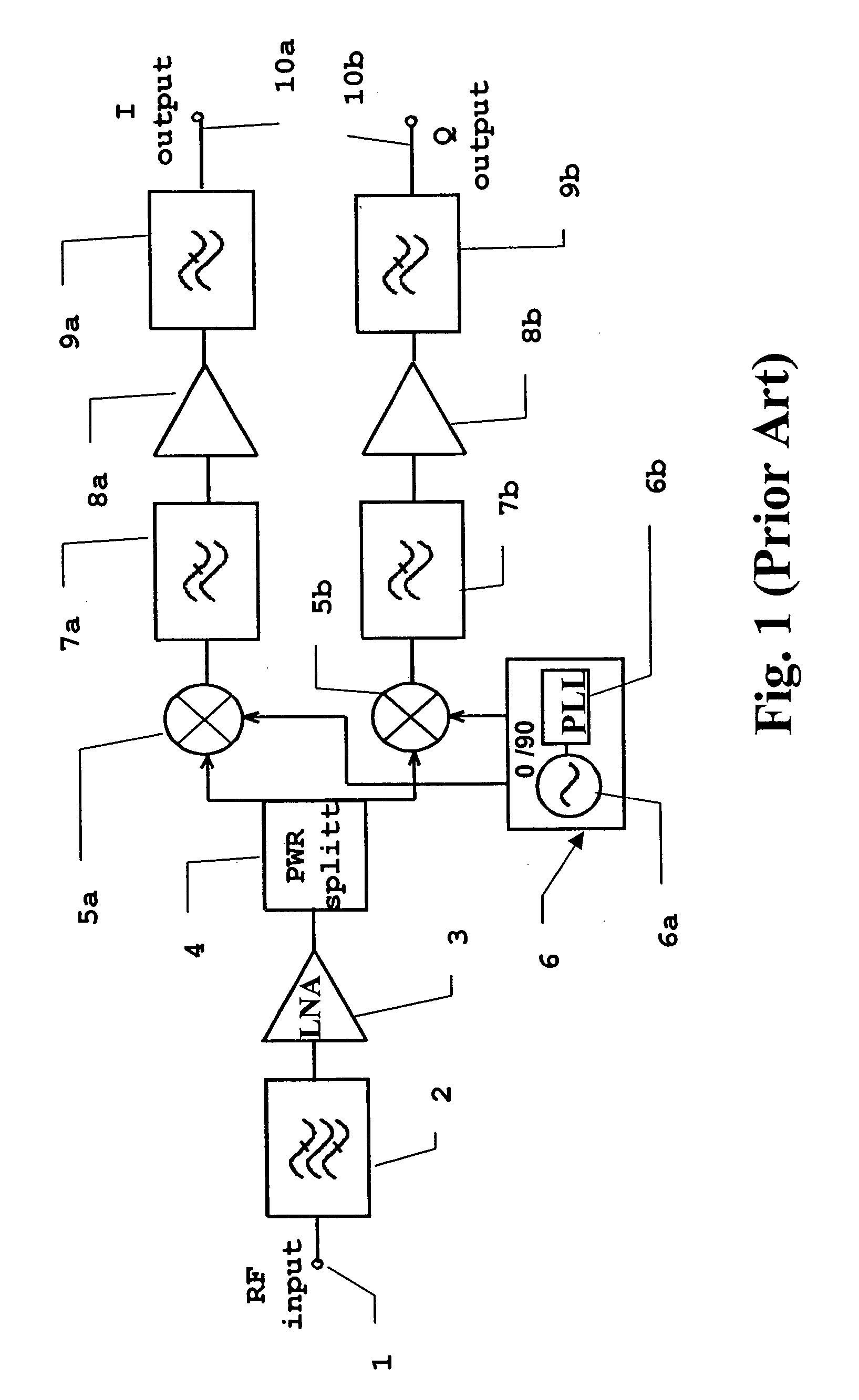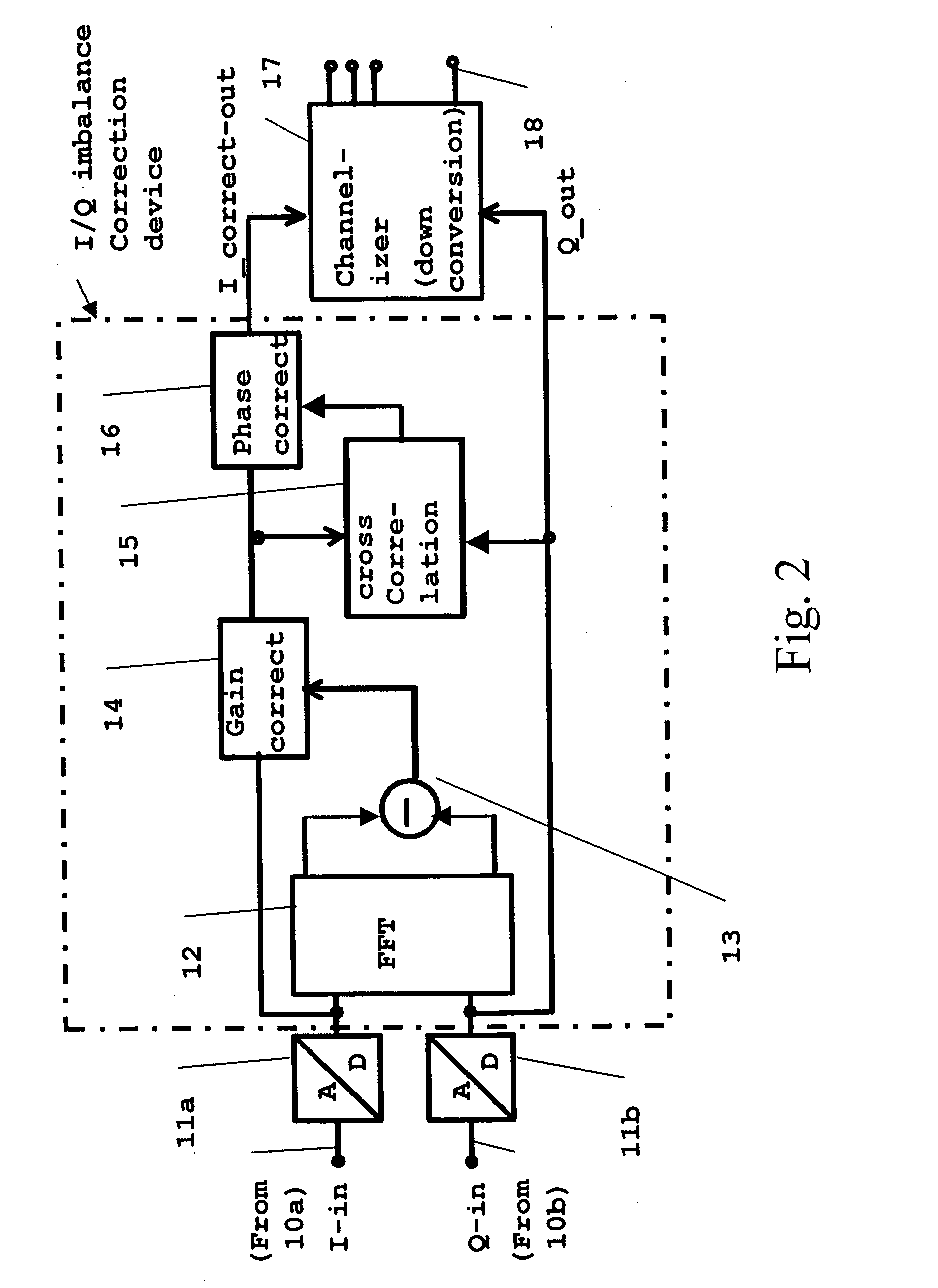Digital imbalance correction method and device
- Summary
- Abstract
- Description
- Claims
- Application Information
AI Technical Summary
Benefits of technology
Problems solved by technology
Method used
Image
Examples
Embodiment Construction
[0064] The present invention will subsequently be described in detail with reference to the accompanying drawings.
[0065] FIG. 2 shows an embodiment of the digital error correction device according to the present invention. The error correction device may be used as a subsequent stage following the analog part of an I / Q conversion receiver as for example shown in FIG. 1. Nevertheless, it may be used as a subsequent stage for imbalance / error correction following also other kinds of multi-branch receivers as long as they output signal components converted with oscillator signals of multiple phases. For example, the imbalance (error) correction device may also be connected to the output of a double quadrature receiver or tri-phase receiver. Firstly, the structure of the embodiment shown in FIG. 2 will be described. As shown, the I / Q outputs of the FIG. 1 arrangement are input as signals I-in and Q-in at respective input terminals. Each signal I and Q, respectively, is supplied to a corr...
PUM
 Login to View More
Login to View More Abstract
Description
Claims
Application Information
 Login to View More
Login to View More - R&D
- Intellectual Property
- Life Sciences
- Materials
- Tech Scout
- Unparalleled Data Quality
- Higher Quality Content
- 60% Fewer Hallucinations
Browse by: Latest US Patents, China's latest patents, Technical Efficacy Thesaurus, Application Domain, Technology Topic, Popular Technical Reports.
© 2025 PatSnap. All rights reserved.Legal|Privacy policy|Modern Slavery Act Transparency Statement|Sitemap|About US| Contact US: help@patsnap.com



